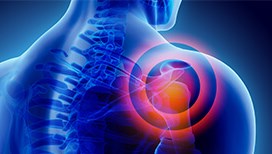The Coolest New Tech Advancement: Cryotherapy for MSK Pain Relief
&srotate=0)
Cryotherapy Explained
Cryotherapy, or cold therapy, has emerged as a popular treatment option in the realm of musculoskeletal (MSK) health management. Originally used by athletes to reduce inflammation and speed up recovery, cryotherapy has now found its place in mainstream medical practices for managing MSK pain. From whole-body cryotherapy chambers to localized ice packs, the applications are varied, but the goal remains the same: to reduce pain, decrease inflammation, and promote healing.
Accessing Cryotherapy: Where and How?
Cryotherapy can typically be accessed in specialized clinics, sports rehabilitation centers, and wellness spas. The most common forms include whole-body cryotherapy (WBC) and localized cryotherapy. Whole-body cryotherapy involves standing in a cryotherapy chamber that surrounds the body (excluding the head) and exposes it to extremely cold temperatures for a few minutes. These chambers are equipped with advanced cooling technology that rapidly lowers the temperature using liquid nitrogen or refrigerated cold air. For those seeking targeted pain relief, localized cryotherapy is applied directly to specific areas using smaller devices, such as cold air machines or ice packs.
Sessions are often short, typically lasting only a few minutes, and are administered by trained professionals who ensure that the treatment is both safe and effective. Although the temperatures are extremely cold, the duration and controlled environment of the sessions are carefully managed to prevent risks like frostbite, making the procedure safe and well-tolerated by most patients.
What Makes Cryotherapy Cool?
Cryotherapy involves exposing the body to extremely cold temperatures, typically ranging from -200°F to -300°F, for a short period—usually 2 to 4 minutes. The cold exposure triggers a physiological response in the body that reduces blood flow to the targeted areas, minimizing inflammation and swelling. Additionally, the cold temperatures can numb nerve endings, providing immediate pain relief. This process also prompts the body to release endorphins, which can improve mood and further reduce the perception of pain.
Localized cryotherapy, which targets specific areas of the body, can be particularly effective for treating acute injuries or chronic pain conditions such as arthritis, tendinitis, and bursitis. The intense cold helps to constrict blood vessels, reduce nerve activity, and decrease muscle spasms—all of which contribute to pain relief and improved mobility.
Benefits of Cryotherapy for MSK Pain Management
One of the primary benefits of cryotherapy is its ability to provide immediate and significant pain relief. For those suffering from chronic MSK conditions, this can be life-changing. By reducing inflammation and improving circulation, cryotherapy can also accelerate the healing process, allowing patients to return to their normal activities more quickly.
Another advantage of cryotherapy is its non-invasive nature. Unlike surgical options or certain medications that come with a range of side effects, cryotherapy is a relatively safe and simple procedure. The risk of complications is low, making it an attractive option for those who are looking for alternative pain management solutions.
Furthermore, cryotherapy has been shown to improve overall muscular health. Regular sessions can help reduce muscle soreness after intense physical activity, enhance muscle recovery, and even improve joint function. This makes it a valuable tool not only for pain management, but also for overall physical well-being.
Candidates for Cryotherapy
Cryotherapy is particularly beneficial for individuals suffering from chronic pain conditions, such as osteoarthritis, rheumatoid arthritis, fibromyalgia, and chronic back pain. Athletes and physically active individuals also find cryotherapy useful for reducing muscle soreness and speeding up recovery after workouts or competitions.
However, cryotherapy is not suitable for everyone. Individuals with certain medical conditions, such as Raynaud’s disease, cardiovascular issues, or severe cold allergies, should avoid this treatment. It’s important to consult with a healthcare provider to determine whether cryotherapy is a safe and effective option for your specific condition.
The Future of Cryotherapy in Musculoskeletal Health
As research continues to explore the benefits of cryotherapy, its applications in MSK health management are expected to expand. Advances in technology are likely to make cryotherapy more accessible and tailored to individual patient needs, further solidifying its role in modern medicine.
If you’re struggling with MSK pain and looking for effective, non-invasive treatment options, cryotherapy could be the solution you’ve been seeking. At Ospina Medical, Dr. Kohler and his team specializing in cutting-edge pain management techniques can help you regain control over your health and connect you with trusted specialists. Book your consultation today to explore how cryotherapy can be integrated into your personalized pain management plan.
Author: Camden Rowe
Medically Reviewed By: Matthew Kohler